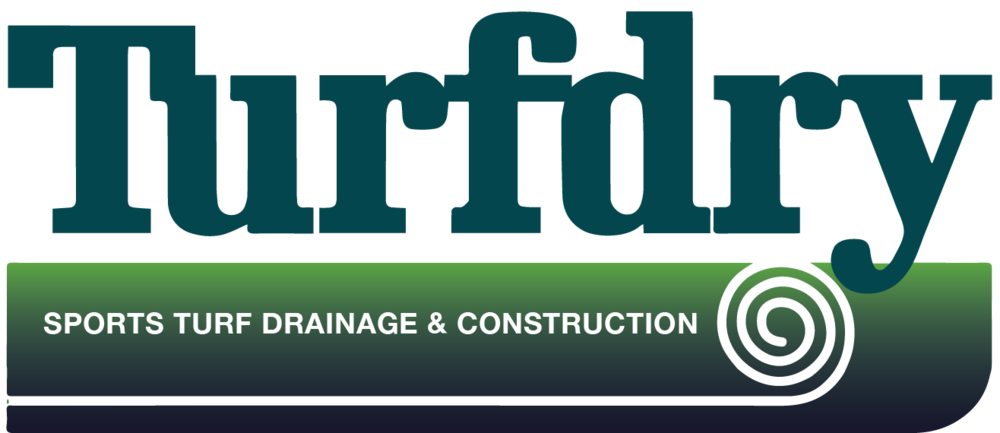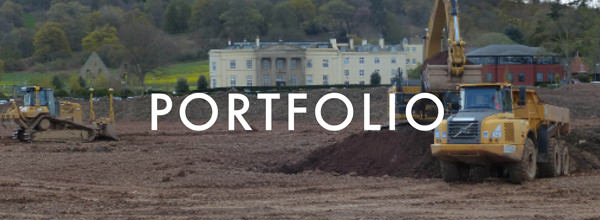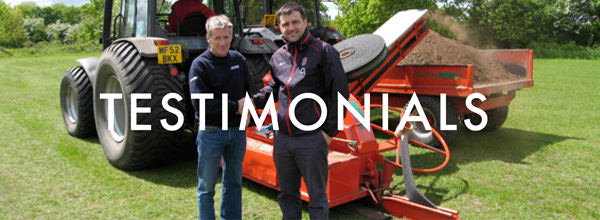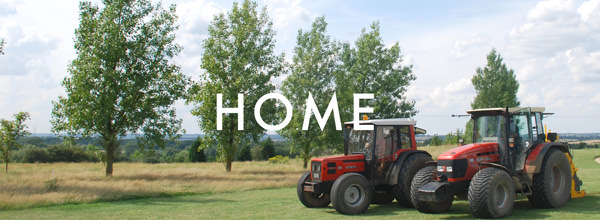Sports Pitch Design & Construction
Although the majority of Turfdry's pitch construction projects are carried from the initial design phase through to final handover, there are always interesting exceptions to any rule. One such instance was the firm's engagement by Telford & Wrekin Council to complete the pitch construction works at its site on Orleton Lane in Wellington, where the subsoil base of the plateau had already been delivered by a third party.
Given Turfdry's extensive experience with pitch construction projects, the remaining items for which they were engaged suggested a relatively straightforward project: spread and level topsoil over the subsoil plateau, install a drainage system, then cultivate and seed the pitches. However, upon attending the site, it soon became apparent that the task at hand was rather more significant. The initial topsoiling works quickly unearthed a substantial chunk of stray rebar, prompting further analysis of the ground conditions. Upon further excavation and broader ground investigations, it was revealed that the entire pitch plateau sub-base was littered with construction detritus, with significant volumes of rebar, concrete, and boulders found across the site.
In addition to posing a serious problem for the long-term standards of the pitch construction, as well as potentially dangerous health & safety implications for end-users, the volume and size of this detritus presented more immediate practical concerns for the completion of the project: for all of its power, the bespoke Turfdry trenching equipment would be torn to pieces if the drainage installation were attempted under such conditions.
Consequently, Turfdry proposed the removal of hazardous material from the pitch plateau through use of an excavator-mounted ripper, which was used to break the ground in three directions (horizontally, vertically, and diagonally) in order to facilitate its extraction and prepare the pitch for further works.
Despite the efforts made during the ripping operations to facilitate a smooth and seamless installation of the drainage, the persistent challenges of the ever-evolving site continued to pose challenges to the project. Although the subsoil and topsoil layers had been cleared of all detritus and levelled to the design specification, problems stemming from soft and saturated ground posed fundamental challenges to the drainage installation. This was precipitated by surface water run-off from the adjacent housing development, which had been caught along the line of the heras fencing that separated the two construction sites. This has resulted in significant softening of the surrounding ground, making sections of the site impassable for the tractor-mounted trenching equipment required to install the drainage system.
Indeed, issues with soft ground permeated the entire site, with some sections of the subsoil plateau - constructed prior to Turfdry's involvement with the project - being made up of soft and saturated layers beneath the drier, firmer layers closer to the surface. This resulted in significant sinkage and rutting across the site, which made the drainage installation impossible, with tractor-mounted trenchers being quickly blocked with sludge, and excavator installation being curtailed by the rapid flooding of excavated trenches by water from the surrounding saturated ground.
With no alternative means of completing the pitch drainage installation, it became clear that a 'deep-drainage' system would need to be installed to dry out the site's subterranean layers, thereby facilitating the installation of the pitch drainage proper. Consequently, Turfdry installed Hydraway Sportsdrain cutoff drains to intercept the runoff water from the housing construction site, laser-graded with a slight fall from the halfway line of the pitch plateau to each corner. Thanks to the unrivalled water-intake rate of the Hydraway Sportsdrain, this proved a quick and effective means of drying out the affected area. Nonetheless, there were still large sections of the site in need of remediation, where soft subsoil had resulted in an undulating surface riddled with ruts and depressions. As such, additional topsoil was imported, spread, and levelled in order to return the site to the initially proposed design levels.
Despite the continued efforts of the weather - with record-breaking rainfall recorded over the autumn posing continued challenges to the project - the pitch construction progressed well once the site had dried, with cultivation and seeding works following the successful installation of the Hydraway Drainage System.
As with the majority of Turfdry's pitch construction projects, the firm was engaged to monitor and maintain the grass sward through its establishment until handover of the facilities. This has resulted in some beautiful pitches, which betray no hint of their challenging construction, now standing as the home ground of NC United FC. Moreover, in addition to recieving the much welcome below testimonial, the most significant evidence of client satisfaction was Turfdry’s being engaged to design and build additional facilities only half a mile away.
Testimonial
“Turfdry has carried out an excellent project on a complicated new development to construct a well-used and highly rated couple of sports pitches. The work has been carried out to a very high quality and games can be played on this site when other sites are postponed. I can fully recommend Turfdry.”
Derek Owen – Telford & Wrekin Council
Project Summary |
Services Provided by Turfdry
AddressTokein Way |























